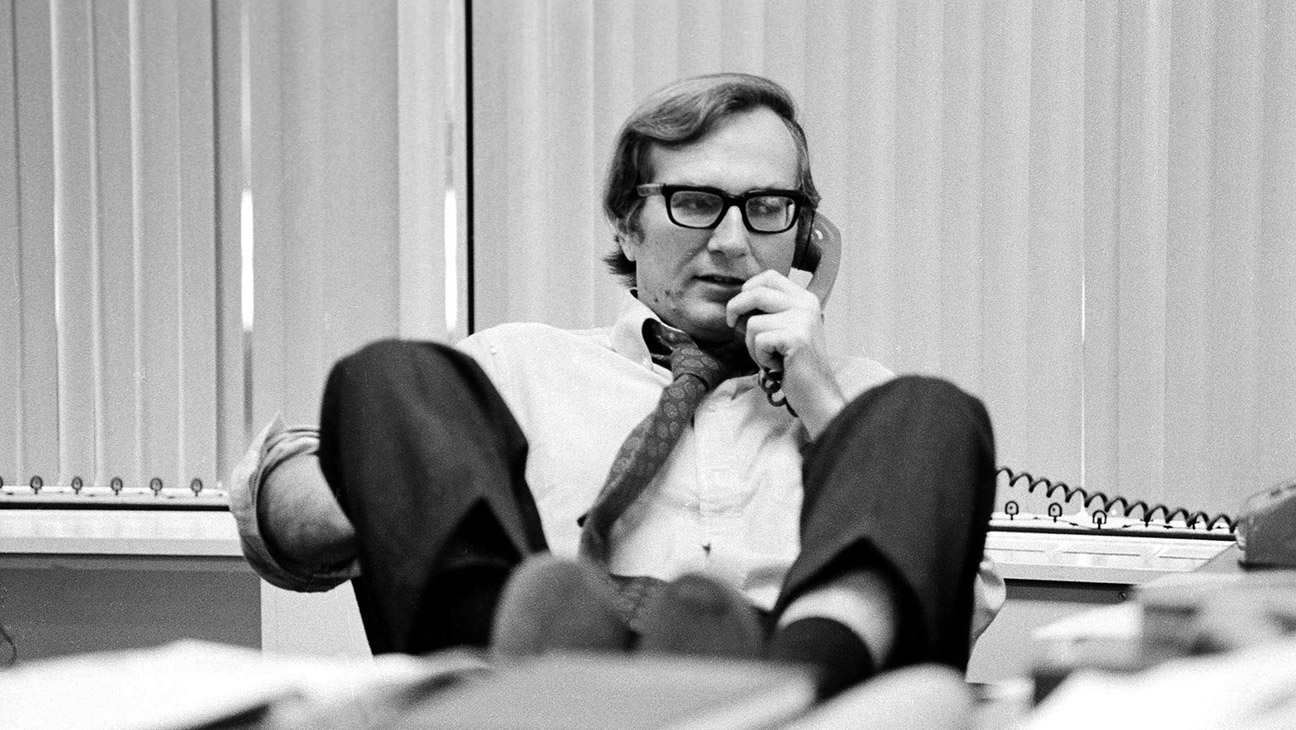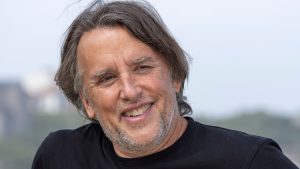
‘Cover-Up’ Review: Laura Poitras and Mark Obenhaus’ Sharp, Sensitive Doc Brings Relentless Truth-Seeker Seymour Hersh Into Focus
When Seymour Hersh remarks, in one of the superb archival clips excerpted in Cover-Up, that “nobody likes the messenger,” he knows what he’s talking about. For nearly 60 years he’s been delivering tough truths that some people don’t want to hear, with My Lai and Abu Ghraib topping the list of explosive stories he’s broken as an investigative reporter. His intrepid work has brought laurels and admiration, but for those who don’t appreciate damning truths about the U.S. government, that work makes him a pariah.
As a documentary subject, Hersh is thoroughly engaging — by turns charming, surly and vulnerable. He opens himself to the attention of filmmakers Laura Poitras and Mark Obenhaus with a sense of purpose, a bit of squirming, and occasional flares of regret. Holding forth in his home office, he’s surrounded by neatly organized boxes of research and yellow legal pads of notes. Rolodex cards with famous names scrawled on them are a museum unto themselves. At one point, his fierce protectiveness of his sources becomes a point of contention. But he perseveres.
Cover-Up
The Bottom Line
An exhilarating portrait of an American hero.
Venue: Venice Film Festival (Out of Competition)
Directors: Laura Poitras, Mark Obenhaus
1 hour 55 minutes
In the 20 years since Poitras first approached Hersh about making him the subject of a documentary, some things have changed, but the need for diligent muckrakers is as strong as it’s ever been. Hersh’s investigative reports no longer appear in The New Yorker or The New York Times; like many journalists who make it their business to question rather than transcribe the official story, he’s working independently, publishing on Substack.
Cover-Up moves between past and present with a fitting sense of discovery and momentousness, Maya Shenfeld’s score pulsing with suspense and at times eerie with foreboding. The clacks of a manual typewriter accompany evocative vintage footage as the film explores some of Hersh’s key areas of focus and revelation, among them the CIA’s domestic spying and mind-control experiments, the Watergate scandal, the post-9/11 war on terror, the Iraq War and corporate malfeasance. Bob Woodward, interviewed for the film, recalls that he and Carl Bernstein welcomed Hersh’s coverage of Watergate for The New York Times as a “lifeline” after the many months they and The Washington Post were alone on that front in the journalism universe.
The doc plunges straight into the stories that Hersh broke back in those keyboard-clacking days, beginning with his exposé on the fallout of nerve gas testing at an Army facility in Utah. The Army denied there was a connection between its activities and the rural area’s dying sheep and ailing people. “I don’t care what the Army says,” Hersh tells a TV interviewer. “I investigated it.” Richard Nixon might eventually believe that Hersh was a “communist agent,” but his administration did end its chemical and biological warfare program not long after his reports were published.
As it delves into Hersh’s role in uncovering the physical horrors and psychic wounds of Vietnam, Cover-Up is especially strong. (It takes its title from one of his 11 books, a 1972 volume about My Lai.) For some viewers, the parallels between that story and current atrocities — and denials — could not be clearer. If you need a more explicit reminder, a little more than a half-hour in, the cameras capture Hersh on the phone with an anonymous source regarding the ongoing devastation of Gaza, one of several areas of interest for the still-on-the-beat 88-year-old.
Hersh was a 32-year-old freelancer when, in 1969, he followed a tip, crisscrossed the country on borrowed money to track down sources, and exposed the “point-blank murder,” as one American soldier described it, of civilians, including children, in a Vietnamese village. Look and Life passed on the story of the My Lai massacre (originally called the Pinkville massacre), but thanks to the diligent startup Dispatch News Service, an alternative news agency, Hersh’s exposé made it onto the front pages of more than 30 papers across the country. Speaking with the filmmakers, Dispatch’s David Obst recalls with humor and amazement how he bluffed his way through negotiating with CBS to get the story on 60 Minutes.
Poitras and Obenhaus include the most haunting moments from that TV report, along with a brief and shattering clip of Michael Bernhardt, an Army private who refused to participate in the My Lai killings and was one of Hersh’s sources. Rebutting the official contention that the people killed at My Lai were members of the Viet Cong and therefore legitimate targets (according to the so-called rules of war), Bernhardt tells the assembled reporters, “Some of the people in the village weren’t old enough to walk yet. I don’t see how they could be Viet Cong.”
Key among the documentary’s revelations is the first-person testimony of Camille Lo Sapio, until now the anonymous source of a trove of shocking photographs from the prison at Abu Ghraib — without which, Hersh tells Poitras, his bombshell 2004 New Yorker article never would have happened. The story Lo Sapio tells is astounding in its straightforward clarity and courage. For comparison, the directors include a clip of Donald Rumsfeld, George W. Bush’s secretary of defense, attempting to parse the difference between torture and abuse.
As to Hersh’s biography, there are echoes of a core theme of Poitras’ All the Beauty and the Bloodshed when he describes a family in which silence prevailed over honest communication. He grows tearful recalling the junior college professor who guided him from his immigrant father’s laundry business to the University of Chicago. Through it all, Mia Cioffi Henry’s camera holds him close and steady, capturing a subtle range of emotions.
Touching on more recent stories, the doc’s second half doesn’t go quite as deep and at moments feels equivocal, notably in its brief look at the forged Marilyn Monroe letters that came Hersh’s way when he was writing a book about the Kennedy administration. Even though he didn’t include them in his reporting, “The media ganged up on him like jackals circling a wounded antelope,” as one writer put it. The Beltway establishment’s disdainful reaction to Hersh’s book The Dark Side of Camelot goes unexplored in the film, though it might have lent some perspective on what an outsider he’s been, even as one of the most celebrated journalists of his generation.
Hersh stands strong on his dismissed-by-the-mainstream reporting on the Nord Stream pipeline sabotage while Poitras, playing devil’s advocate or perhaps sincerely concerned, presses him on his choice to publish work attributed to only one source. His answer might be dismissed as vague if it were uttered by someone without his record of uncovering high-level crimes.
To be first is not always to be welcomed. The film wisely points out that the first wave of reactions to Hersh’s My Lai story questioned its validity and dismissed it as propaganda — something worth keeping in mind as we navigate the ever-devolving information age. Cover-Up isn’t propelled by the you-are-there urgency of Poitras’ Citizenfour, but it’s urgent nonetheless, an eloquent reminder that patriotism is better defined by informed dissent than by flags and pins and unquestioning allegiance to government institutions.
Early in his career, as a member of the Pentagon press pool for AP, Hersh witnessed at close range what he calls “self-censorship by the press.” And so, rather than waste his lunch hour with incurious types who were satisfied to report the official story and call it a day, he wandered into the corridors to talk with people who might know something. As it turns out they did, and, lucky for us, he was there to listen.











